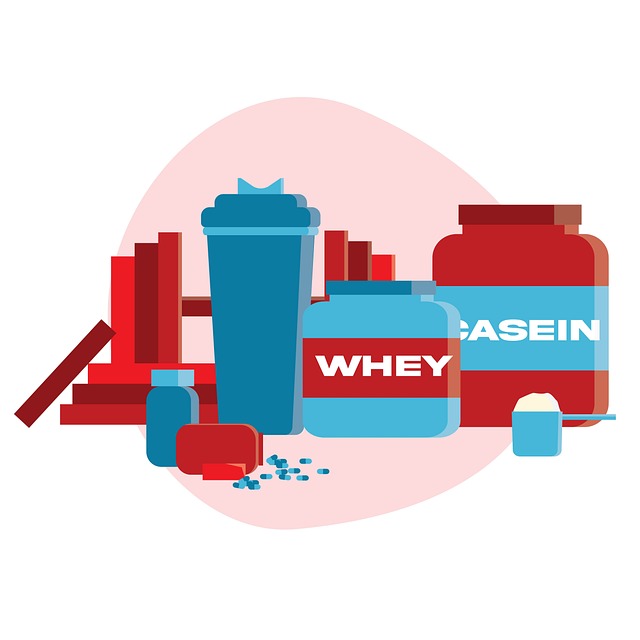Every January, the calendar turns a new leaf, inviting athletes of all disciplines to revisit their habits and set fresh goals. Beyond the obvious training schedules, the foundation of performance—and recovery—lies in what we put on our plates. Athletes’ diet, the intricate balance of macronutrients, micronutrients, timing, and hydration, is the silent partner that can make or break a season. This article explores how athletes can craft New Year’s resolutions that honor their bodies, sharpen focus, and ignite the promise of a “fresh new me.” The journey starts with intention, moves through actionable steps, and culminates in a lifestyle that thrives beyond the gym.
Why Athletes’ Diet Matters More Than Ever
Elite performance is rarely the product of training alone. A well‑structured diet provides the energy to train harder, the nutrients to repair, and the balance to maintain mental sharpness. When athletes neglect nutrition, they risk reduced endurance, delayed recovery, and increased injury risk. A balanced diet, on the other hand, fuels glycogen stores, supports muscle protein synthesis, and optimizes hormone regulation.
- Energy Supply: Carbohydrates act as the primary fuel source for high‑intensity work.
- Muscle Recovery: Protein, along with essential amino acids, repairs micro‑tears that occur during training.
- Inflammation Control: Omega‑3 fatty acids and antioxidants help keep inflammation in check.
- Hormonal Balance: Adequate intake of healthy fats supports testosterone, estrogen, and cortisol regulation.
Setting a Realistic New Year’s Resolution
Resolutions that are too lofty often crumble under pressure. Start by setting SMART goals—Specific, Measurable, Achievable, Relevant, and Time‑bound. For athletes, this could translate into a concrete nutritional milestone rather than a vague “eat healthier” statement.
“I will consume at least 1.5 grams of protein per kilogram of body weight daily for the next 12 weeks.”
This target is specific (protein grams per kg), measurable (track with a nutrition app), achievable (given proper meal planning), relevant (supports training), and time‑bound (12 weeks). By anchoring your resolution in clear metrics, you set the stage for accountability.
The Core Pillars of an Athletes’ Diet
While individual needs vary, most professional athletes share four foundational pillars that can be adapted to suit personal preferences and sports demands. Aligning your yearly plan around these pillars ensures a holistic approach.
-
Carbohydrate Management
Carbs are the linchpin of endurance and power. Opt for complex sources—whole grains, legumes, root vegetables—while strategically timing simple sugars around workouts for rapid glycogen replenishment.
-
Protein Quality and Distribution
Incorporate lean meats, fish, dairy, and plant‑based options to meet daily protein targets. Spreading protein intake across 4–5 meals supports steady muscle protein synthesis.
-
Healthy Fats and Omega‑3s
Sources like salmon, chia seeds, walnuts, and olive oil deliver essential fatty acids that aid joint health and hormone regulation.
-
Micronutrients and Hydration
Vitamins and minerals such as iron, calcium, magnesium, and B‑complexes are pivotal for metabolic processes. Pair these with adequate water intake—typically 3–4 liters per day for most athletes—to support thermoregulation and nutrient transport.
Planning for Success: Meal Timing and Composition
The timing of nutrient intake can amplify the benefits of your diet. Below is a typical day for an athlete looking to maximize performance and recovery:
- Pre‑Workout (60–90 min before): A moderate carb snack, such as a banana with a small scoop of peanut butter, primes glycogen stores without causing gastrointestinal distress.
- Post‑Workout (within 30 min): A protein‑rich shake or a lean protein meal paired with a carb source—like quinoa or sweet potato—accelerates muscle repair.
- Evening Meal: A balanced plate with vegetables, a lean protein, and healthy fats supports overnight recovery and sleep quality.
- Between Meals: Hydrate consistently and consider a protein‑infused beverage if you need to keep protein distribution uniform.
Supplementation: Enhancing the Base, Not Replacing It
Supplements can bridge gaps in an athlete’s diet, but they should never be the primary source of nutrition. Common supplements for athletes include:
- Protein Powders: Whey, casein, or plant‑based blends help meet protein goals, especially post‑training.
- Creatine Monohydrate: Supports high‑intensity work and strength adaptations.
- Omega‑3 Capsules: Complement dietary fish intake for anti‑inflammatory benefits.
- Vitamin D and Calcium: Essential for bone health, especially in athletes with limited sun exposure.
Always consult a sports nutritionist or medical professional before adding new supplements, and use reputable brands that have undergone third‑party testing.
Mindset: The Invisible Ingredient
A refined diet is as much about mental discipline as it is about food choices. Cultivating a growth mindset can help you embrace challenges and stay consistent. Consider these practices:
- Track Your Progress: Use a food diary or mobile app to log meals and identify patterns.
- Set Mini‑Milestones: Celebrate small wins, like successfully preparing a balanced lunch or reducing sugary snack intake.
- Practice Mindful Eating: Slow down, savor flavors, and notice hunger cues to avoid overeating.
- Surround Yourself with Support: Engage teammates, coaches, or a nutrition coach to hold you accountable.
Accountability Structures That Work
Goal‑setting is only effective if you have mechanisms to hold yourself accountable. Below are practical structures for athletes:
- Weekly check‑ins with a registered dietitian.
- Monthly body composition measurements (body fat %, muscle mass).
- Bi‑weekly performance metrics tied to nutrition (e.g., sprint times, recovery scores).
- A shared group where peers log meals and provide feedback.
These layers create a safety net that turns intentions into reality.
Overcoming Common Pitfalls
Even the best‑planned diet can stumble. Here are common stumbling blocks and how to navigate them:
- Time Constraints: Prep meals in bulk on weekends and use portable containers for on‑the‑go options.
- Unclear Portions: Use measuring cups or a kitchen scale to establish serving sizes.
- Social Events: Plan ahead by choosing healthier menu items or bringing a balanced dish.
- Plateaus: Reassess caloric needs as weight changes; adjust macro ratios to stay in the right energy window.
Looking Forward: Sustaining the Fresh New Me Beyond 2025
A New Year’s resolution is a catalyst, but lasting change demands integration into daily life. The following steps help cement the gains:
- Set a yearly review date to adjust macro targets as training intensity evolves.
- Maintain a “menu library” of quick, balanced recipes for days when time is scarce.
- Keep hydration at the forefront; carry a water bottle everywhere.
- Integrate flexibility: allow occasional indulgences that fit within a controlled calorie range.
- Revisit mental strategies regularly, perhaps through journaling or guided meditation sessions.
When you weave these habits into the fabric of your life, the “fresh new me” becomes a sustainable state rather than a fleeting trend.
Final Thoughts
Setting a New Year’s resolution for athletes’ diet is a powerful declaration of intent. By grounding your goals in SMART principles, structuring your meals around proven nutrition science, and pairing them with supportive accountability frameworks, you set the stage for improved performance, faster recovery, and overall well‑being. Remember, the journey is incremental; each small adjustment accumulates into a significant transformation. Step into the new year with confidence, knowing that the discipline of nutrition is your most reliable ally.



